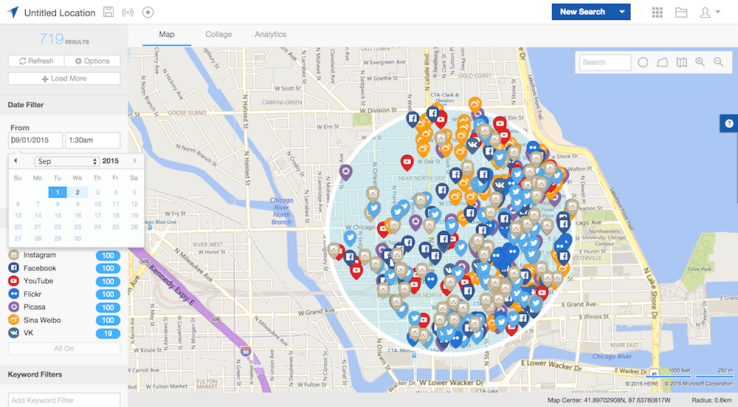 CEO of TradeGecko
CEO of TradeGecko
To avoid the fate of retail chains that disappeared after overwhelming competition from online retailers, wholesalers and other suppliers must develop new customer-serving e-commerce skills.
Since the age of the Silk Road, middlemen have been necessary for international trade. They’ve been the only conduit for sellers to connect to local buyers, and the only source for accurate information on the products they sell.But all that is changing in the Internet age.Ten years ago, e-commerce platforms like eBay, Amazon, and Alibaba started to compete with physical retail stores, undercutting or completely destroying consumer-sector giants like Borders and Best Buy. Now they’re doing the same to the wholesalers and importers that supplied those retailers with goods. Today, 97% of U.S.-based eBay sellers export to other countries, compared with 4% of brick-and-mortar businesses. And their market share is rising.This tsunami of Internet competition may be too much for most middlemen to withstand. But there is hope. Here are five ways that businesses selling goods to other businesses can stay relevant for the next 10 years:1. Treat business customers like retail consumersOver the last decade, the so-called “consumerization” of enterprise commerce has already blurred its former distinction from business-to-consumer retail commerce. Customers across all markets and industries have heightened demands for their shopping experience, driving great investment by sellers in customer service. Moreover, while most of their transactions occur through impersonal purchasing and procurement processes, enterprise companies increasingly see themselves as selling to people. As one chief marketing officer said in a post for The Economist Group: “We don’t approach our target audience as a group of decision-makers who buy our services, but as people who are time pressed and have a difficult job to do.”This adjustment is a great start, but it’s not enough. For the middleman to survive, the distinction between selling to businesses and selling to consumers will have to collapse entirely.2. Sell directly to customersLarge and trusted brands increasingly use their own distribution channels to reach business customers. This revolution in how retailers and manufacturers do business is going to have casualties, most notably, intermediaries who provide little value besides a smiling face for potential customers. By bypassing traditional car dealerships, Tesla is already proving that one of the most recognizable intermediaries no longer provide as much value as they once did. In the past local dealers were necessary to hold inventory, taking on the associated risk and building trust with customers who had few resources for updated product information. But now, technology allows consumers to do their own research, and the demand for totally customizable automobiles makes hoarding inventory a moot point. Most likely, Tesla won’t be the last car company to leave local auto sellers in the dust, and other industries will soon follow suit.3. Play to the customer’s sense of selfB2B marketers tend to stick to the facts. But in reality, business customers are just as likely as consumers to make purchase decisions based on subjective feeling. For example, a study by business research firm CEB published in Harvard Business Review found that perceptions of a product’s value to the company often weren’t enough to seal a B2B deal. Offerings that touched on personal identity—“positively reinforcing a customer’s self-image”—were much more likely to turn stakeholders into mobilizers “personally motivated to champion the deal.” And without those mobilizers, researchers found that sales often fell through.That doesn’t mean that B2B marketing should abandon facts. But it does mean it needs to intertwine them with consumer-style branding. For instance, many of the videos telling the stories of Grainger customers in the Everyday Heroes campaign have hundreds of thousands of views on YouTube. One video about a racecar driver’s pit crew has almost a million views. Grainger’s ads connect to their target audience’s tastes, interests and emotions while maintaining the brand’s focus on industrial equipment—truly the best of both worlds. Companies don’t buy things, people do—and people care about a company’s image.4. Make the leap to e-commerceWhile big, more-established companies may be able to sell directly to customers, smaller and younger ones still need help reaching the market. Huge opportunities exist in the realm of business-to-business e-commerce for those who realize how to seize them. Frost & Sullivan predicts that by 2020 the global market for this type of e-commerce will rise from $3.2 trillion to $6.7 trillion—twice that of the consumer market. Moreover, the research firm also predicts a compound annual growth rate of 7.7% in B2B e-commerce over the next five years.Companies that adopt an e-commerce model have broken out of the swirling tide that has begun sinking older models like the auto dealers. Studies have shown they can decrease the cost of sales by up to 90% by shepherding customers through an online shopping environment. Moreover, the same research shows the average conversion rate on B2B e-commerce sites is 7.3%, compared with 3.0% for consumer retail sites. Industrial supplies company Grainger, a pioneer in online B2B platforms, offered more support for that idea when it announced that 94% of its 2014 revenue growth came from online sales.5. Make your catalogs mobileE-commerce platforms aren’t just for reaching customers from afar—they’re useful at trade shows and for client meetings as well. A well-designed mobile catalog empowers salespeople to take orders from customers directly on their mobile devices, replacing cumbersome paper orders and line sheets. Best of all, when inventory changes, companies don’t have to order an expensive reprint—the mobile catalog can be updated in real time.For wholesalers, importers, and other middlemen that have not transformed to fit the current digital landscape, the future looks bleak. But for companies willing to change how they approach their customers, there’s still hope. Better e-commerce platforms, a smoother shopping experience, and more creative marketing and sales techniques can only make customers happier—and profit margins fatter. In the end, the new consumerization of B2B could be a huge opportunity, for former middlemen and their enterprise customers alike.Matt Holzapfel and Carl Paulus of Hippo Reads contributed to this blog.Cameron Priest is CEO of TradeGecko, a provider of cloud-based technology for managing customer orders, customer accounts and inventory through desktop and mobile devices. Follow him on Twitter @cameronpriest.


















